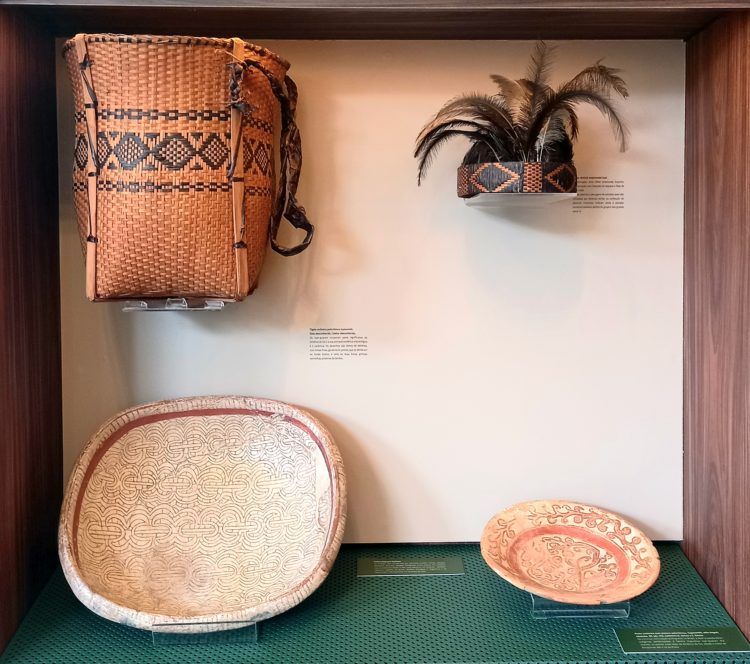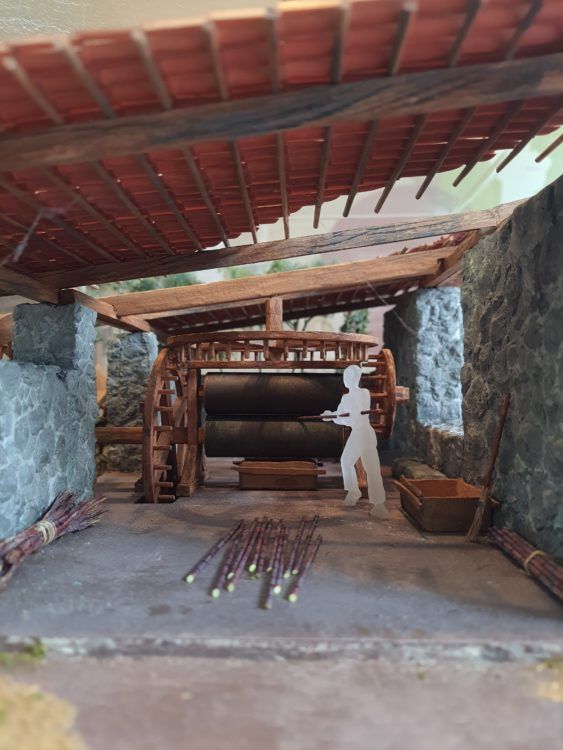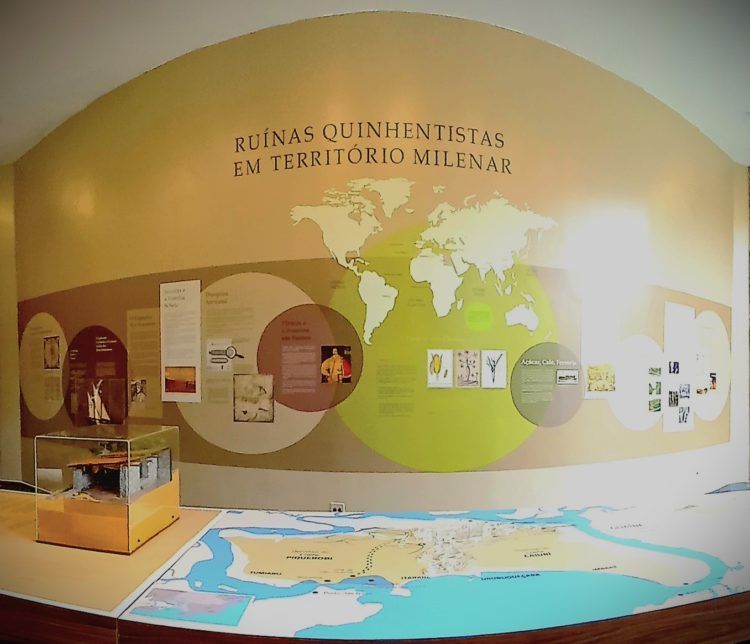Update | 2/28/2023
The opening date of the exhibition has been changed to April 4, 2023.
An unprecedented exhibition on the formation processes of the Baixada Santista territory, with information on indigenous peoples, shell people and historical maps
By Elcio Silva
2/2/2023 12:20 p.m.
The Monumento Nacional Ruínas Engenho São Jorge dos Erasmos (National Monument Ruins of Engenho São Jorge dos Erasmos), a cultural and extension organization of USP, is inaugurating the exhibition “Ruínas Quinhentistas em Território Milenar” in Santos on March 15, 2023, at 10 am. It is free to visit and open to all interested parties.

Objects from the indigenous Tupinambás. Photo – Disclosure Engenho dos Erasmos.
Archaeological artifacts were found at the site, which will be exhibited for the first time, as well as ethnographic objects representing the Tupinambá indigenous people.
For Professor Yuri Tavares Rocha, the institution’s director, “the 16th century Ruins in Millenary Territory exhibition is an extension of the Engenho’s educational and training activities as a cultural and university extension organization”.
According to the professor, never before has so much data been made available to the public. “Since its foundation almost 500 years ago and its donation to USP almost 70 years ago, there has never been direct and simultaneous access to so much important information about the lands of the original peoples on which it was built, about its secular history of changes of owners and invasions, up to the most recent history, when the Engenho became an archaeological site in the custody of USP,” says Rocha.
Visitors will also be able to see a diorama – a realistic three-dimensional artistic presentation of scenes from real life – depicting shell people who inhabited the coast millennia ago, a rich map library with contextualized and illustrated historical maps on the African diaspora, occupation of the territory (today Brazil) by the original peoples, indigenous paths (such as the Peabiru that connected the Atlantic to the Pacific), the formation of quilombos, the history of Lagamar Santista, among others, as well as an exclusive work by contemporary indigenous artist Moara Tupinambá, which is now part of USP’s collection. Monitored visits and teacher training meetings are planned.
The Engenho dos Erasmos

Representation of the Engenho in a model at the exhibition. Photo – Disclosure Engenho dos Erasmos.
An organ of USP’s Pró-Reitoria de Cultura e Extensão Universitária, the Monumento Nacional Ruínas Engenho São Jorge dos Erasmos is the oldest preserved physical evidence of Portuguese colonization in Brazil. It is a unique architectural complex, listed at national, state and municipal level.
In addition, it is considered an iconic representative of the Amerindian/European/African ethnic-cultural connection, a material testimony to the beginning of European occupation of American territory and the colonizer’s contact with indigenous people and enslaved Africans at the beginning of the 16th century.
16th Century Ruins in Ancient Territory
In 2018, Engenho dos Erasmos started the “Philosophical Garapa” series, which brought together lectures on topics related to colonization and territory. Based on this experience and considering the political moment Brazil was experiencing, with the advance of authoritarian groups and discrimination, Beatriz Pacheco Jordão, then director of the agency (2018 – 2022), and a professor at USP’s Instituto de Biosciências (IB), submitted the project for the exhibition to PROAC in 2019, with the aim of telling the story with more representation for the peoples and cultures that formed that territory and not from the perspective of the colonizer. The proposal was awarded in the Modernização de Museus, Arquivos e Acervos (Modernization of Museums, Archives and Collections) category and developed over three years.
According to the project coordinator, who also shares the curatorship with educator André Müller de Mello, from Engenho dos Erasmos, “the exhibition, in addition to proposing the strengthening of narratives based on the formation of the territory, countering structural silences of the Tupiniquim and Tupinambá resistances to the colonizing process, also highlights archaeological signatures of shell people prior to the arrival of Europeans”.
“The choice represents a turning point in the way Engenho is presented to the public, leaving behind the more Eurocentric narrative and bringing to light the importance of the representativeness of different subjects in the formation of the country. This new, more complete and diverse vision is something we can’t go back from,” says Beatriz Jordão.

Part of the exhibition with historical data. Photo – Disclosure Engenho dos Erasmos.
Based on a letter written in 1548 to the owner of the Engenho, with details of the administration, the exhibition seeks to show the different facets of the occupation of the territory, based on this main document available from the time.
Excerpts contextualized with images, texts and quotes from primary sources from the 16th century show the constitution of the foundations of the political and social power of the plantation owners, based on the monopoly of land, slavery and the crystallization of a patriarchal society.
Ruínas Quinhentistas em Território Milenar was produced with funds from the São Paulo Cultural Action Program (Edital PROAC No. 13/ 2019) of the São Paulo State Government’s Creative Economy Department and Pró-Reitoria de Cultura e Extensão Universitária from USP. The exhibition is in partnership with Museu de Arqueologia e Etnologia (MAE) from USP.
Service
Exhibition 16th Century Ruins in Millenary Territory
Opening | March 15, 2023 – 10 a.m.
Where | National Monument Ruins of Engenho São Jorge dos Erasmos
Rua Alan Cíber Pinto, 96, Vl. São Jorge – Santos – SP
How much | Free admission
Rating | Free for all audiences
Visiting | Tuesday to Saturday, from 9 am to 4 pm.
Groups of more than 15 people need to book their visit in advance at ruinasenhenho@usp.br or by calling (13) 3229-2703.
Translated by Lara Yoshime Shizuko Fukushima





